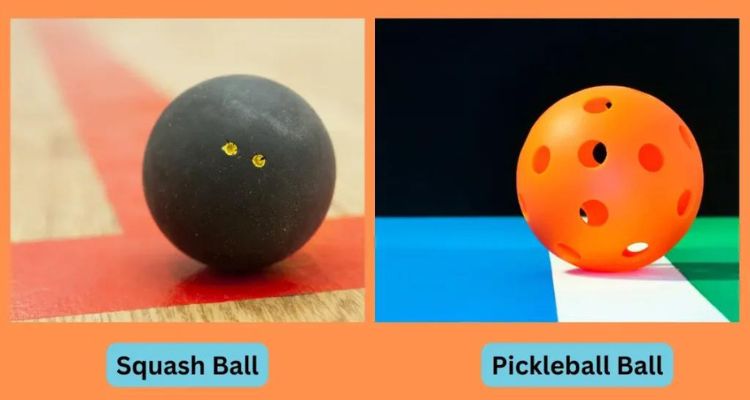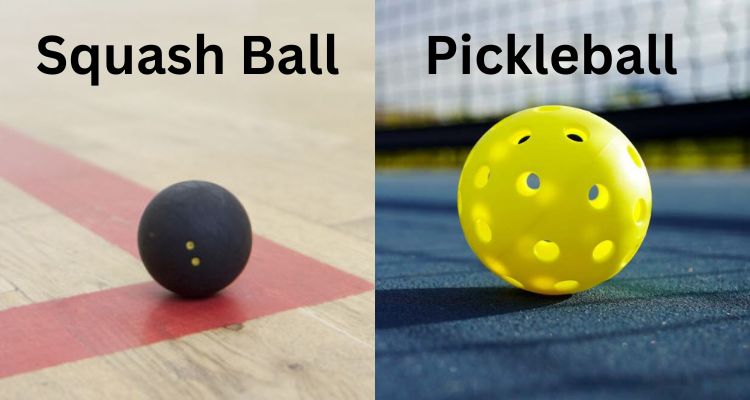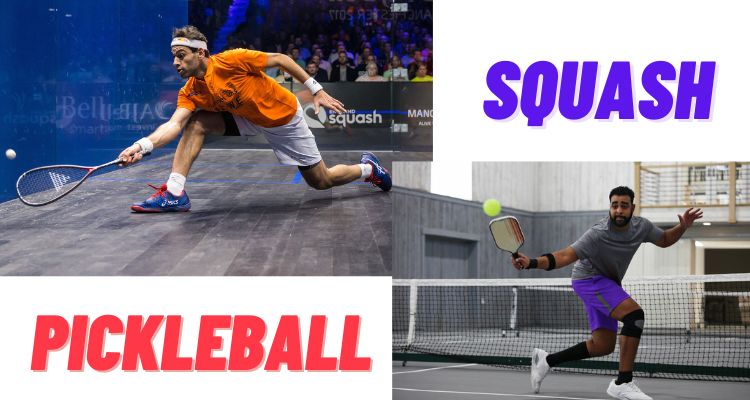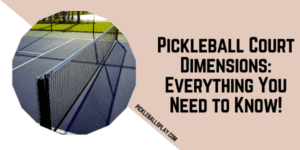You’ve Got Racquet! Exploring the Differences Between Squash and Pickleball
If you’re a fan of racquet sports, chances are you’ve heard of squash and pickleball. But do you really know what sets them apart? In this exciting article, we’re going to dive into the key differences between squash and pickleball, from equipment to rules and scoring. Whether you’re already a squash enthusiast looking for a new challenge or a curious newbie wanting to try both games, we’ve got you covered!

What’s the Dealio? Getting to Know Squash and Pickleball
Squash and pickleball may both be played with a racquet and a ball, but that’s where the similarities end. These two games differ in equipment, court size and structure, rules, and even scoring. Let’s take a closer look:
Pickleball Paddle vs. Squash Racquets
Squash racquets are longer and thinner, with a smaller surface area for making contact with the ball. They have strings, similar to tennis racquets. On the other hand, pickleball paddles are shorter and wider, with a larger surface area for hitting the ball. They are solid and have no strings, typically made of carbon fiber, graphite, or composite materials.
Pickleball Balls vs. Squash Balls
Pickleball balls are smooth, durable plastic with about 26-40 regular-sized holes. They measure between 2.874 and 2.972 inches in diameter. Squash balls, on the other hand, are rubber, bouncier, harder, and smaller than pickleball balls. The bounce level of a squash ball is indicated by its color, with elite balls being smaller and less bouncy.
Squash Courts vs. Pickleball Courts
Pickleball courts are typically 20 feet by 44 feet, with a net in the middle that stands 34 inches high at the center. The court is divided into two service zones on each side, and there’s a non-volley zone (also known as the kitchen) that extends 7 feet from the net on both sides. Pickleball courts can be played indoors or outdoors. Squash courts, on the other hand, measure 21 feet by 32 feet and are surrounded by four walls. The walls have lines marking the out-of-bounds and service areas, and there’s a tin at the bottom of the front wall that acts as a lower boundary for shots. Squash courts are strictly indoor.
Pickleball Rules vs. Squash Rules
When it comes to rules, pickleball and squash each have their own unique set. In pickleball, the ball can only bounce once before the player must return it, and it must land inside the court boundaries or on the lines. The serve must be underhand and diagonal, clearing the non-volley zone. Only the serving team can score points by winning rallies. In squash, the ball can only bounce once on the floor before the player must return it, but it can bounce off the walls multiple times as long as it stays within the boundaries. The serve must be overhand and hit above the service line on the front wall, and it must land in the opposite quarter court. Both teams can score points by winning rallies or forcing errors from their opponents.

Transitioning from Squash to Pickleball: Tips & Tricks
If you’re a seasoned squash player ready to take on the world of pickleball, or even a novice looking to explore both games, here are some handy tips to make your transition smoother:
Tip 1: Adjust Your Equipment
Pickleball paddles are shorter, wider, and more solid than squash racquets. You may need to experiment with different paddle materials, shapes, and weights to find the perfect fit for your style and preference. Likewise, pickleball balls are larger, softer, and have holes, while squash balls are smaller, harder, and solid. Adjust your timing, angle, and force when hitting pickleball balls to accommodate their unique properties.
Tip 2: Change Your Tactics
Pickleball and squash have different strategies, so switching between the two requires some adjustments. In pickleball, a key tactic is to get to the net as quickly as possible, dominating rallies with volleys and putaways. On the other hand, squash players often stay in the center of the court to cover all angles and shots. Understanding these nuances will enhance your performance in each game.
In pickleball, the drop shot is a common move, landing a soft shot in the opponent’s kitchen area to force them to hit up. In squash, the lob reigns supreme, sending a high shot that bounces off the back wall, putting pressure on your opponent. Adapt your shot selection accordingly!
Serve styles also differ between the two sports. In pickleball, serves are underhand and diagonal, used to start the rally rather than as a weapon. Aim for depth, spin, or placement to make it difficult for your opponent to return. In squash, the serve is overhand and straight or cross-court, often used as a powerful weapon with varying speeds and angles.
Tip 3: Learn the Rules
Understanding the unique rules of each game is essential for a successful transition. In pickleball, the scoring system differs, with games played until one team reaches 11 points and wins by a two-point margin. Only the serving team can score points. In squash, games are played until one player reaches 11 points, also with a two-point margin. Both players can score points by winning rallies or forcing errors from their opponents.

Pickleball rules have some additional features to be aware of, such as restrictions on volleying within the non-volley zone and hitting the ball before it bounces on your side of the court (except for the serve return). Squash, on the other hand, allows volleys anywhere on the court and hitting the ball after it bounces off any wall as long as it stays within the boundaries.
FAQs: Answering Your Burning Questions
Can you play pickleball on a squash court?
Yes, you can play pickleball on a squash court, but you’ll need to modify the court dimensions and follow pickleball rules. Pickleball courts are smaller, measuring 20 feet by 44 feet, while squash courts are larger at 32 feet by 21 feet. You’ll need to use tape or chalk to mark the playing area and ignore the walls and tin. Playful modifications can make playing pickleball on a squash court a blast!
Can you play squash on a pickleball court?
Unfortunately, squash cannot be played on a pickleball court due to squash’s requirement for a four-wall structure. Squash involves bouncing the ball off the walls, creating unique angles and shots. Playing squash on a pickleball court would result in an entirely different game experience.
Is pickleball a rough sport?
Not at all! Pickleball is known as a relatively low-intensity and social sport. It’s often referred to as a “gentleman’s game” and is easy to learn. Most pickleball courts also have rules around aggressive play to prevent it from becoming too physical or rough.
Wrap it Up: The Best of Both Worlds!
Squash and pickleball offer different yet equally exciting experiences for racquet sports enthusiasts. Squash demands speed, skill, and strategy with its fast and furious gameplay, while pickleball provides a slower, more accessible game that requires accuracy, calmness, and clever tactics. Each game has its own unique charm and challenges.
If you’re itching to transition from squash to pickleball, or vice versa, following the tips in this article will help you adapt your equipment, tactics, and mindset accordingly. Embrace the differences, enjoy the journey, and savor the thrill of playing both games!




